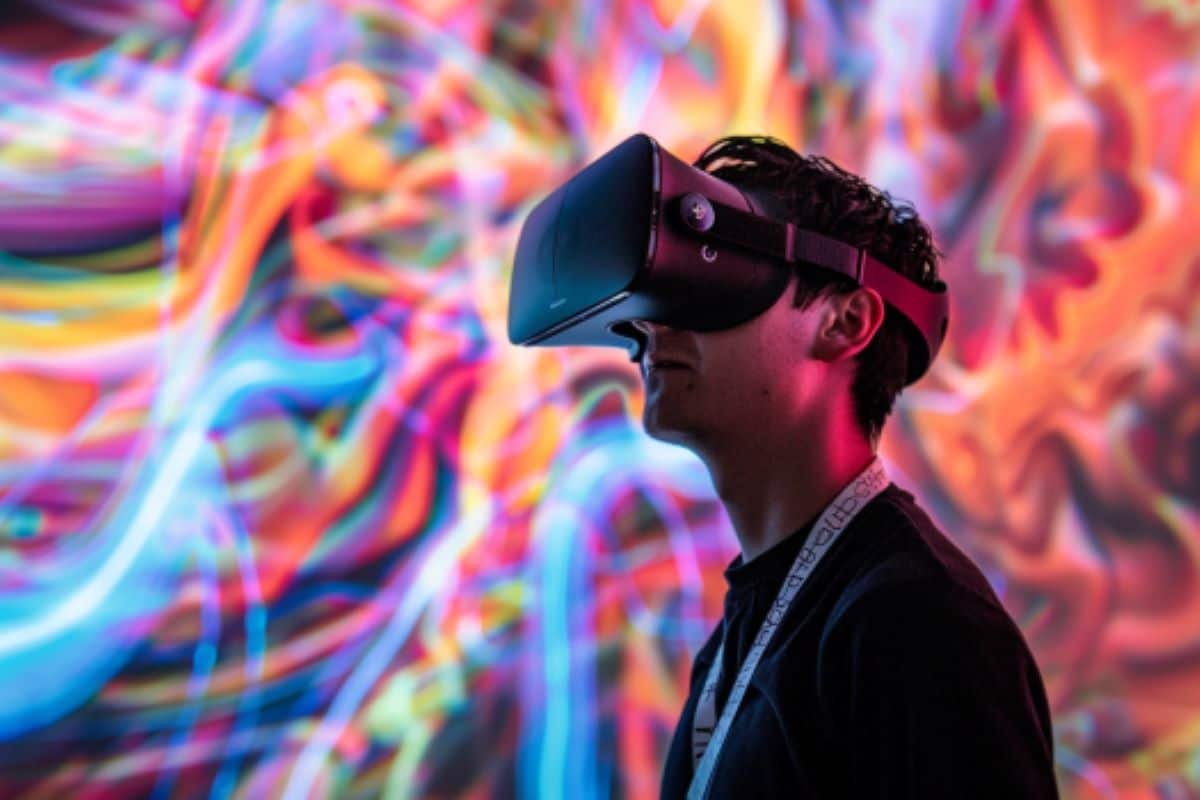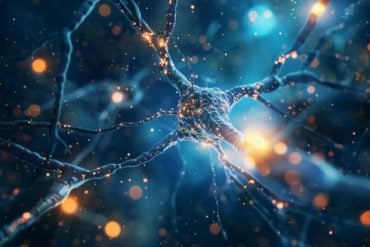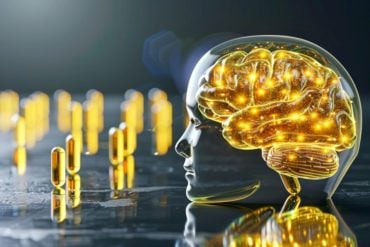Summary: Researchers successfully induced illusions of self-location in participants using multi-sensory virtual reality (VR). They observed corresponding changes in the brain’s grid cells, which are responsible for spatial navigation.
This study is the first to demonstrate that purely cognitive changes in self-location, without physical movement or visual cues, can trigger activity in grid cells.
Key Facts:
- Multi-sensory VR induced illusory self-location changes in participants.
- Brain imaging revealed corresponding changes in grid cell activity.
- This study opens possibilities for diagnosing hallucinatory symptoms and developing new therapies.
Source: KIST
Dr. Hyuk-June Moon from the Bionics Research Center at the Korea Institute of Science and Technology (KIST), in collaboration with Prof. Olaf Blanke’s team at the Swiss Federal Institute of Technology Lausanne (EPFL), has successfully induced self-location illusions with multi-sensory virtual reality (VR) in the MRI scanner and observed corresponding changes in the human brain’s grid cell activity.
The brain is known to contain grid cells and place cells, which perform global positioning system (GPS) functions that allow us to recognize where we are.
While traveling to a specific place, the GPS cells along the way fire in turn, depending on their location, and these cells play an important role in recognizing our location in the form of coordinates and remembering events in space.

Humans can sometimes perceive themselves to be in a different location without actually moving their physical bodies such as during an illusion, such as out-of-body experience.
However, such purely cognitive self-location changes—and the corresponding response of the brain’s GPS cells—have not been investigated in animal models like rats, where these perceptions cannot be induced or confirmed.
Furthermore, conventional methods to study GPS cell studiess have required opening the skull and measuring the activity of individual cells in the deep brain structures with invasive electrodes, limiting our understanding of human GPS cells.
To observe grid cell activity during the illusory self-location changes, the researchers combined MRI-compatible VR technology with multisensory bodily stimulation to induce the illusion, which was precisely controlled in various directions as designed.
The fMRI Images measured during the experiment were used to estimate the activities of grid cells, and the subjective illusory experiences of participants were assessed through post-experiment questionnaires and behavioral metrics reflecting their perceived self-location.
As a result, the team demonstrated for the first time that purely cognitive changes in magnetic positionsuch illusory self-location changes induced by multisensory bodily stimulation, without any changes in the visual environmental cues, elicit corresponding activities of human grid cells.
This is the first clinical study to demonstrate that multisensory bodily stimuli alone can evoke grid cell activities, without any kind of navigation (not active nor imagined) and without change in the visual perspective.
It shows that GPS coordinates in the human brain respond not only to the physical location of the body but also to location information based on various cognitive activities and experiences, raising the possibility of objective diagnosis of hallucinatory symptoms through brain image analysis.
The findings are also expected to contribute to the development of new therapies by providing targets for the treatment of patients suffering from illusory symptoms such as out-of-body experience.
Dr. Moon stated, “Unlike previous human grid cell studies, which have relied on changes in visual environmental cues from a first-person perspective, we have newly suggested a key research element of integrating multisensory bodily signals.” adding,
“We plan to conduct follow-up international collaborative research to further understand the brain mechanisms underlying illusions caused by various mental and neurological diseases, and to develop non-invasive brain stimulation treatments that can alleviate these symptoms.”
Funding: This research was supported by the Ministry of Science and ICT (Minister Lee Jong-ho) under the KIST Major Project and the Swiss National Science Foundation (320030_188798). The results of the research were published in March in the international journal PNAS (IF: 11.1).
About this neuroscience research news
Author: Eunhye Bae
Source: KIST
Contact: Eunhye Bae – KIST
Image: The image is credited to Neuroscience News
Original Research: Closed access.
“Changes in spatial self-consciousness elicit grid cell-like representation in entorhinal cortex” by Hyuk-June Moon et al. PNAS
Abstract
Changes in spatial self-consciousness elicit grid cell-like representation in entorhinal cortex
Grid cells in the entorhinal cortex (EC) encode an individual’s location in space, integrating both environmental and multisensory bodily cues. Notably, body-derived signals are also primary signals for the sense of self.
While studies have demonstrated that continuous application of visuo-tactile bodily stimuli can induce perceptual shifts in self-location, it remains unexplored whether these illusory changes suffice to trigger grid cell–like representation (GCLR) within the EC, and how this compares to GCLR during conventional virtual navigation.
To address this, we systematically induced illusory drifts in self-location toward controlled directions using visuo-tactile bodily stimulation, while maintaining the subjects’ visual viewpoint fixed (absent conventional virtual navigation).
Subsequently, we evaluated the corresponding GCLR in the EC through functional MRI analysis.
Our results reveal that illusory changes in perceived self-location (independent of changes in environmental navigation cues) can indeed evoke entorhinal GCLR, correlating in strength with the magnitude of perceived self-location, and characterized by similar grid orientation as during conventional virtual navigation in the same virtual room.
These data demonstrate that the same grid-like representation is recruited when navigating based on environmental, mainly visual cues, or when experiencing illusory forward drifts in self-location, driven by perceptual multisensory bodily cues.






